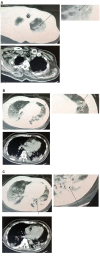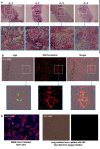Histopathologic Changes and SARS-CoV-2 Immunostaining in the Lung of a Patient With COVID-19
- PMID: 32163542
- PMCID: PMC7081173
- DOI: 10.7326/M20-0533
Histopathologic Changes and SARS-CoV-2 Immunostaining in the Lung of a Patient With COVID-19
Figures


Comment in
-
Histopathologic Changes and SARS-CoV-2 Immunostaining in the Lung of a Patient With COVID-19.Ann Intern Med. 2020 Aug 18;173(4):323-324. doi: 10.7326/L20-0894. Ann Intern Med. 2020. PMID: 32805179 No abstract available.
References
Publication types
MeSH terms
Substances
LinkOut - more resources
Full Text Sources
Miscellaneous
